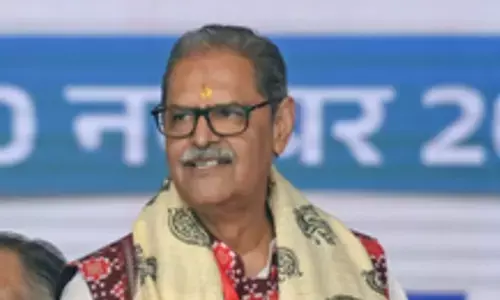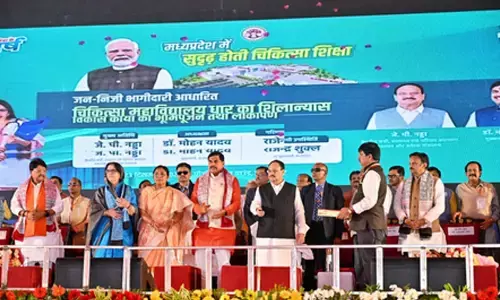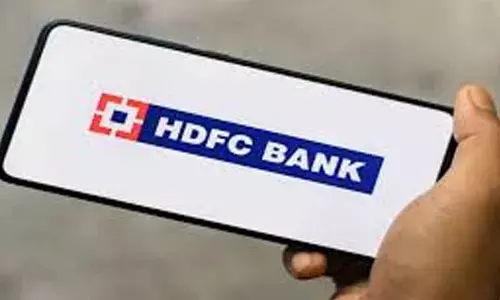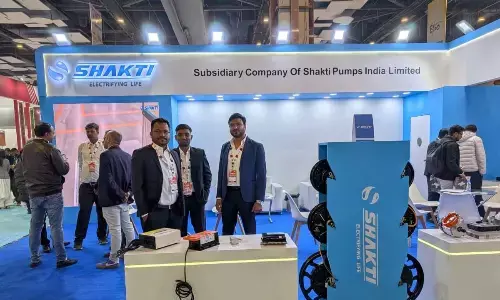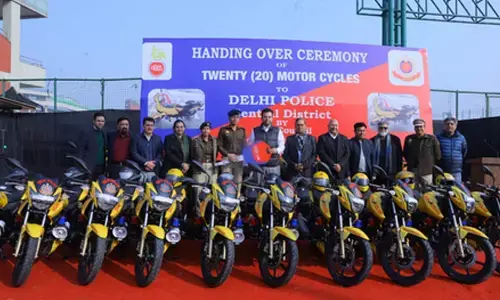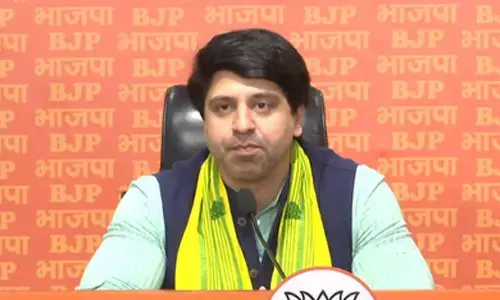Gear up to savour new age banking

Like in many aspects of everyday life, technology-led Alternative Delivery Channels (ADCs) – E-Channels have begun to change the landscape of any-where-banking module.
Like in many aspects of everyday life, technology-led Alternative Delivery Channels (ADCs) – E-Channels have begun to change the landscape of any-where-banking module. Proliferation of Automated Teller Machines (ATMs), Mobile banking, internet banking, Point of Sale (POS) Terminals, hand-held devices used by Business Correspondents (BCs) and mobile kiosks have come to increasingly occupy banking space.
Thus, today brick and mortar bank branches are not essential for many of the routine activities. As against 1,15,822 bank branches in March 2014, the number of ATMs have reached 1,60,055 and POS terminals have scaled up to 10,65,984. The number of debit card holders in banks has reached 19.2 million.
The range of services offered by banks through E-channels too have widened right from simple deposit/withdrawal of cash to making fixed deposits to seeking loans on line. But still many customers have apprehensions in using technology modules leading to low penetration. Since there is no manual intervention in data processing, customers should remain assured that the E-channels are safe and have proved globally as an effective way to do banking.
Remaining sensitive about their password protection, changing password from time to time and not compromising secrecy of password is important. It is like a safe key that needs utmost protection. Once its importance is kept in mind, navigating through E-channels can be a good experience. The developments can be illustrative of efforts made in this direction.
White label ATMs (WLAs)
In order to supplement the efforts of banks in providing banking services to people in unbanked/under-banked areas, non-bank establishments were permitted to install and operate ATMs with greater focus on Tier III to Tier VI centers. A total of 1,960 WLAs had been deployed as on April 30, 2014. With more and more entities entering the market, customers can soon find many ATMs across the country making banking services access easier.
Cardless cash withdrawal by unbanked persons
In order to facilitate unbanked persons to withdraw remittances initiated by ‘senders/remitters’ from their bank accounts. The card-less service is to enable bank account holders to transfer/remit funds, within permissible limits, to an unbanked beneficiary using a mobile number as the identification of the receiver and pin codes for enabling withdrawal. The transaction can be facilitated with the help of receiver/beneficiary’s mobile number, 4-digit sender code of remitter’s choice, amount to be remitted, sender’s mobile number.
The beneficiary will be able to withdraw the money in full at any of the ATMs of the participant banks using a set of these codes/numbers - one received from the bank and the other from the remitter. It is intended to bring about a culture of using technology devices by existing/potential customers who have not experienced E-banking facilities.
Payment banks proposed
A Committee on Comprehensive Financial Services for Small Business and Low Income Households (Chaired: Dr Nachiket Mor) made far reaching recommendations to penetrate banking services to unbanked hinterland with the help of technology. Setting up of payments banks in India is a key recommendation intending to leverage on technology and provide a limited range of products such as acceptance of demand deposits and remittances of funds with a widespread network of access points particularly in remote areas.
The trend so far is noteworthy that the retail electronic usage has registered a growth of 59.68% in volume and 50.11% in value – NEFT volumes and values grew by 67.71% and 50.87%, respectively, during the year.
Similarly the Debit card usage has registered a growth rate of 28.35% against the growth rate of credit card at 25.24 % during the year. The National Unified USSD Platform (NUUP) of the NPCI offers an interoperable USSD-based mobile banking service. It can be accessed without internet connectivity. Just any one can dial *99# and get connected to their bank account.
The new Bharat Bill Payment System
It is intended to be a pan-India system for running the bills payment module in the country. The entire system shall operate on a single brand image so as to enjoin the confidence and trust of the customers. It will provide convenience of ‘anytime anywhere’ bill payment on an interoperable bill payment mode for millions of customers in the country. It will eventually replace the segmented bill payments taking place in silos at present. The designed standards will also address the need for uniformity in handling customer grievances, settlement procedures and timelines, etc. The operating units will link up the billers and the collection agents and provide the interoperability which is lacking in the present system.
Conclusion
When the development of technology led ADCs in banks in the last decade is seen in the backdrop of recent call for ‘Digital India’ and plan to connect 75 million households under the Prime Minister’s Jan Dhan Yojana by 26th January 2015, customers too should join the campaign to proactively use these modes to experience the new age banking. With strength of mobile users scaling up beyond 900 million, internet users reaching 243 million and the Government’s E-governance initiatives set to bring 6,40,000 villages under its ambit with an outlay of Rs 1,13,000 crores (in 4 years), intense technology spread is awaited. With such potentiality and collaboration in the offing, consumers can look forward for enterprising banking services at its finger tip. Unless each one of us harnesses its emerging potentiality, banks cannot be transformed into modern financial intermediaries of international stature that can sub serve the Indian enterprise.








